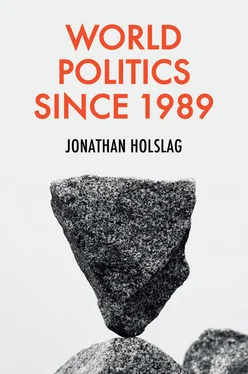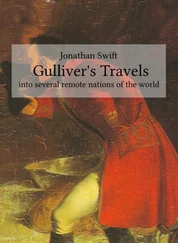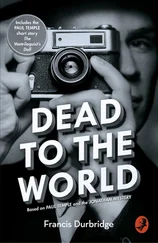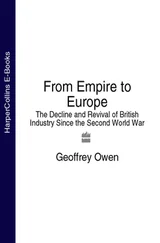The West struggled. It struggled with turbulence outside and disorientation inside. While Thatcher proclaimed the glory of global Britain, hundreds of thousands of citizens demonstrated in London against economic uncertainty and privatization. Confirming the dismal state of the economy, the pound nosedived. Far-right parties gained ground on the European continent. The United States experienced a mini stock market crash in 1989, encountered a bigger one in the autumn of 1990, and subsequently went into recession. Saddening stories appeared about poverty in cities like Detroit. “Most of the neighborhoods appear to be the victims of bombardment – houses burned and vacant, buildings crumbling, whole city blocks overrun with weeds and the carcasses of discarded automobiles,” a reporter put it. “Shopping streets are depressing avenues – banks converted into fundamentalist churches, party stores with bars and boards on their windows and, here and there, a barbecue joint or saloon.” 7
Not only in Detroit was the infrastructure dilapidated. In New York, the iconic Williamsburg Bridge between Manhattan and Brooklyn was closed because of neglect. America’s cities looked old and fragile due to a decade of accumulated neglect. In the 1980s, a lot of infrastructure in the United States and the United Kingdom had been privatized. While previous generations sacrificed labor and capital to expand public infrastructure, built bridges, schools, and hospitals, Western countries started to shift spending from investment to consumption. Labor shifted from construction and manufacturing to banks, shops, and other services. The share of investment in America’s GDP had dropped from 25 percent in 1980 to 19 percent in 1990. The situation was similar in the United Kingdom. “Historians will come to doubt our national sanity,” a British politician alerted. 8The situation was a little better on the European continent, with France investing in high-speed trains, the Netherlands spending on flood defenses, and new ports and airports being opened throughout the region. 9Experts worried about a tendency to harvest the benefits from investments made by previous generations without making sufficient new investments to secure prosperity for the next generations.
Besides underinvestment in public infrastructure, economists questioned whether there was sufficient investment in manufacturing. Since the late 1980s, manufacturing growth in the United Kingdom and the United States had stalled. Growth of investment in factories had dropped significantly compared to earlier decades. This all happened at a moment when the consumption of manufactured goods increased. Strong national currencies benefited consumers of goods, because they made imports cheaper, but came as a challenge to local producers of goods. Optimist economists stated that the shift toward services made the economy competitive and that growth of information technology kept the West ahead of its rivals. They also stated that the reduction of manufacturing in places like Detroit need not be a problem, as long as new jobs were created in services elsewhere. Growth would continue, but in different sectors and in different regions.
Critics, however, suggested that an economy could not survive on services alone: “A service economy is a balanced one where all sectors – agricultural, manufacturing and services – are viable even though the great majority of people may work in one area.” 10Another concern was the abandoning of so-called basic industries, like steel and assembling. Instead of making factories more efficient and environmentally sustainable, the production of such goods was outsourced to countries with laxer social and environmental standards. 11It was an immense contradiction that the same economists who declared their faith in a free market that propelled efficiency gains accepted that rich governments forced polluting companies to close and that poor governments encouraged polluting companies to invest. It was a contradiction also that those who repeated their trust in progress found it normal that even in the twentieth century poor countries needed to pass through a stage of economic and environmental exploitation first. New services, like real estate and finance, were embraced with the same ease in the West as so-called sunset industries were demoted, disregarding the fact that Western citizens could still not imagine a life without basic goods like cotton, polymers, or aluminum.
A critical part of Western society that also suffered from low investment was education. In the 1980s, President Ronald Reagan had wanted to abolish the federal education department altogether, leaving schools to be managed by local governments and dependent on private financing. Neoliberal puritans posited that free education would be better. From a more opportunistic viewpoint, privatization and decentralization were meant to reduce costs. In the United States and the United Kingdom, privatization added to polarization. While schools had once been considered a social blender, they now contributed to segregation. 12With good education reserved for a small group of rich students, experts warned of a tide of mediocrity. Civic education, crucial for democracies to show that they were truly superior to communist societies, had fallen into disarray. 13Robust civics instruction, usually organized into three mandatory high-school courses, had been left to atrophy. Large groups of children were left behind, children getting second-rate education in third-rate schools. 14Child labor returned to parts of the United States. 15Ten subway stops from the lavish apartments around Central Park, New York, poor school pupils were seen doing worse than their parents: “Bleeding gums, impacted teeth, and rotting teeth are routine matters for the children in the South Bronx. Children get used to feeling constant pain. They go to sleep with it.” 16
For many Western countries, the 1980s were a period of decreasing investment, dwindling saving rates, and increasing household consumption. One of the comments of liberal economists about the Soviet planned economy was that it misallocated capital to sectors that did not make the country more productive. Now it could be questioned whether capitalism was not leading to the misallocation of capital in the West. How could it be that giant shopping malls were erected, yet there was no money to build schools and maintain bridges? How could it be that the rich were spending lavishly on yachts and penthouses, yet millions of poor children were ignored, hardly received quality education, and, hence, would not in any way help the economy to grow stronger? A berth for a yacht in New York could cost as much as US$2 million a year, enough to pay for about 500 children at elementary school. When asked about his single apartment worth US$12 million in downtown Manhattan, the property owner, a future American president, said: “While I cannot honestly say I need an 80-foot-long living room, I do get a kick out of having one.” 17How could it be that privatization in the 1980s had made the average American or British citizen spend more on healthcare and other public services, yet with their quality being in decline? Should it really be taken for granted that capitalism was superior?
The growing consumption in several Western countries coincided with growing external debt. As they imported more than they exported, some of the imports had to be pre-financed. But President Ronald Reagan had explained this as a sign of strength. After all, he argued, it implied that countries like the United States were creditworthy enough for foreigners to advance money. 18You can only borrow large quantities of money if you are strong. Many economists agreed, but suggested some conditions. 19America and other deficit countries could use the foreign money and cheap imported consumer goods as an opportunity to invest in innovative industries, education, and infrastructure. If not, some experts warned, growing debt combined with a weakened economy would mean repayment problems in the future. Even the position of the United States as the leading economy and the American dollar as the leading currency could be at risk. 20Why, after all, would one accept American dollars to build financial reserves if the American economy was set to weaken in the long run? One economist referred to the dilemma as the morning-after problem. 21
Читать дальше

![Деннис Лихэйн - Когда под ногами бездна [Since We Fell ru]](/books/25722/dennis-lihejn-kogda-pod-nogami-bezdna-since-we-fe-thumb.webp)










